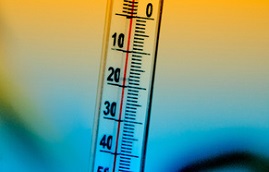Thermostats are vital for regulating the temperature inside our homes. While it may not be the most complex or largest component, the thermostat is needed to communicate instructions to other components of the system. If your thermostat is poor quality or is malfunctioning in some way, it can cause a number of problems. Here are just a few thermostat issues that can affect the cooling process in your home.
Poor Thermostat Placement:
Although it may appear to be a minor issue, your thermostat placement is actually a very important aspect of the installation process. The thermostat needs to be in an easy to access area, but it should not be placed near heat sources. If your thermostat is near to a boiler or in direct sunlight, it can cause problems. If the thermostat is heated by direct sunlight or an appliance rather than the ambient room temperature, it will create a false temperature reading. This will mean that the system will be triggered to switch on and start cooling. So, even if the ambient room temperature is comfortable, your air conditioner will switch on, wasting energy and making the room feel too cold. The same problem can apply if the thermostat is placed too near to air conditioning blowers or vents. The temperature sensor will determine that the room has reached your desired temperature even if the room is still warm.
A Dirty Thermostat:
Modern thermostats are sensitive electronic devices, which means that if any dust or dirt accumulates, it can compromise operational quality and cause malfunctions. During your annual air conditioning service, the technician will check to see if your thermostat is dirty, but it is also a good idea for homeowners to check it periodically. Most thermostats have a panel that clips off, allowing you to gently clean away any dust or debris that may have built up inside.
Bad Batteries:
This is one of the simplest thermostat issues, but it is still a very common issue. Since the batteries inside a thermostat tend to last a long time, many homeowners forget that they do need to be replaced periodically. If the batteries have started to run low, you may find that the display does not illuminate or it may go totally blank. This means that your air conditioning system cannot be turned on or off, or adjusted in any way. Many homeowners experience erratic system behavior due to bad batteries, but the problem can be resolved quickly. Your owner’s manual will detail how to access the battery compartment on your thermostat. It is usually behind a panel that slides, clicks or hinges off the main thermostat body. It is a good idea to change the batteries regularly, even if you are not experiencing any thermostat issues, as bad batteries can leak acid that can cause serious damage to the sensitive thermostat components. Many homeowners use their annual service date as a reminder to change their thermostat batteries. Additionally, if you lack confidence accessing the battery compartment, you can ask your technician to change the batteries for you.
